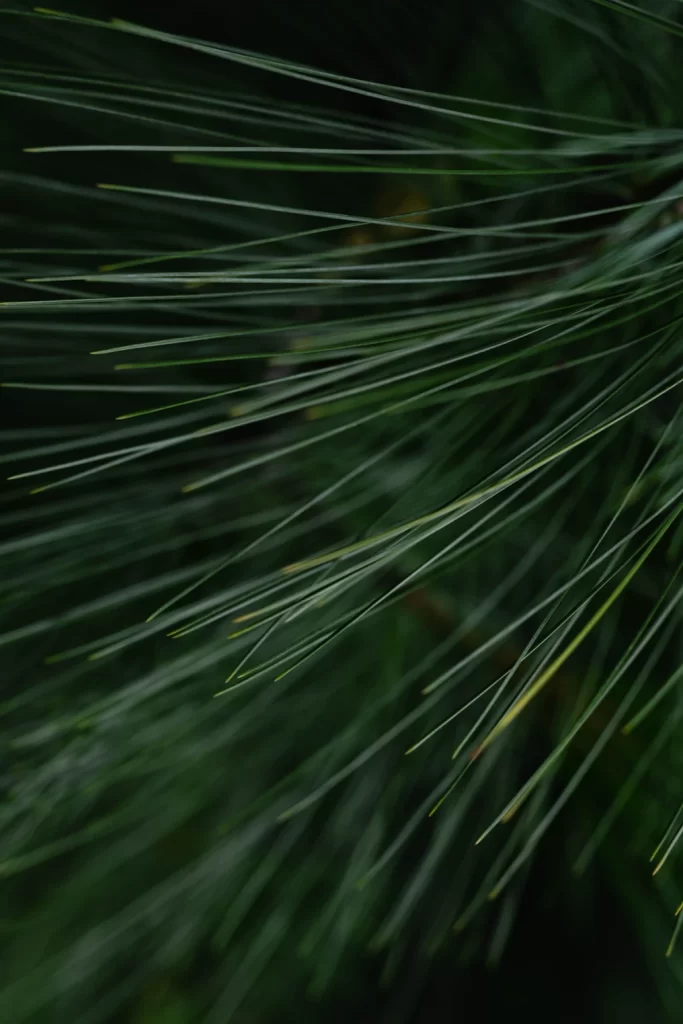Pine needles have been used for their medicinal properties for centuries, but did you know that different types of pine trees have unique characteristics and properties? In this blog, we will explore the differences between Korean pine needles and other pine needles.
Korean Pine Needles
Korean pine trees (Pinus koraiensis) are native to Korea, China, and Russia. The needles of the Korean pine tree are long and slender, measuring between 4 and 7 inches in length. They are a vibrant green color and are often used in traditional Korean medicine.
Korean pine needles are rich in antioxidants, including polyphenols and flavonoids. These antioxidants help to protect cells from oxidative damage and reduce inflammation in the body. Korean pine needles also contain high levels of vitamin C, which can boost the immune system and improve skin health.
Other Pine Needles
Other types of pine trees, such as the white pine (Pinus strobus) and the red pine (Pinus resinosa), also have medicinal properties. However, the characteristics of their needles differ from those of Korean pine needles.
White pine needles are shorter and thinner than Korean pine needles, measuring between 2 and 5 inches in length. They are a bluish-green color and have a mild, pleasant scent. White pine needles are often used in teas and extracts to boost the immune system and relieve respiratory issues.
Red pine needles are longer and thicker than Korean pine needles, measuring between 5 and 7 inches in length. They are a dark green color and have a strong, resinous aroma. Red pine needles are often used in traditional Chinese medicine to treat a range of ailments, including digestive issues, respiratory problems, and fatigue.
Differences between Korean Pine Needles and Other Pine Needles
The primary difference between Korean pine needles and other pine needles is their antioxidant content. Korean pine needles contain higher levels of antioxidants, including polyphenols and flavonoids, than other types of pine needles. Korean pine needles also contain higher levels of vitamin C than other types of pine needles.
Another difference between Korean pine needles and other pine needles is their traditional use. Korean pine needles have been used in traditional Korean medicine for centuries, while other types of pine needles are more commonly used in traditional Chinese medicine.
Understanding the differences between Korean pine needles and other pine needles can help you choose the best type of pine needle for your needs. Whether you are looking to boost your immune system, reduce inflammation, or improve your skin health, pine needles offer a natural and effective solution.
References:
- Kim, J. S., & Kim, D. J. (2015). Anti-inflammatory effects of pine needle extract in vitro and in vivo. Food Science and Biotechnology, 24(2), 717–725. https://doi.org/10.1007/s10068-015-0094-4
- Kwon, Y. S., Park, J. H., Kim, Y. K., & Lee, J. H. (2013). Antioxidant and anti-inflammatory activities of pine needle extracts in vitro. Journal of the Korean Society of Food Science and Nutrition, 42(2), 287–292. https://doi.org/10.3746/jkfn.2013.42.2.287
- Lee, J. H., Kim, Y. K., & Kwon, Y. S. (2012). Antioxidant and antimicrobial activities of pine needles (Pinus densiflora Siebold et Zuccarini, Pinus koraiensis Siebold et Zuccarini, and Pinus rigida Mill.). Preventive Nutrition and Food Science, 17(3), 191–195. https://doi.org/10.3746/pnf.2012.17.3.191
- Park, J. H., Kim, Y. K., & Kwon, Y. S. (2015). Anti-aging effects of pine needle and pine bark extracts in vivo. Journal of the Korean Society of Food Science and Nutrition, 44(5), 652–659. https://doi.org/10.3746/jkfn.2015.44.5.652
These studies provide evidence of the medicinal properties of pine needles, including their antioxidant and anti-inflammatory effects.

Pine Tree needle

